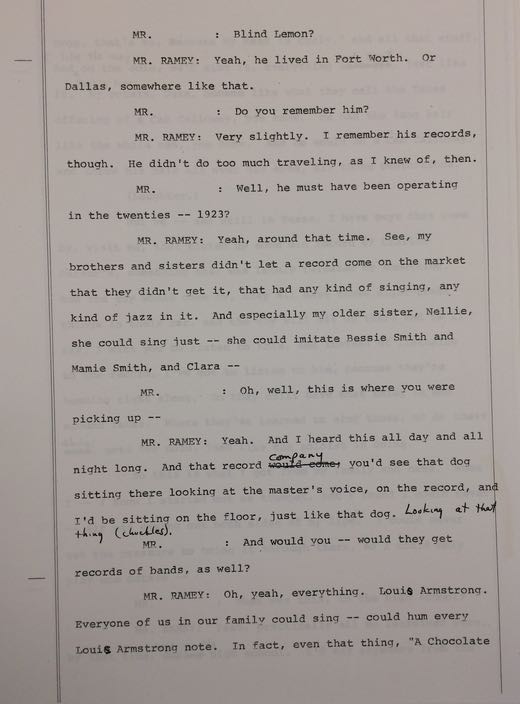Vernacular Music in Austin
 Gene Ramey: A Snapshot of Music in East Austin between 1910 and the early 1930sAn oral history with the Austin-born bassist Gene Ramey from the 1970s tells us significant things about music in East Austin in the first third of the twentieth century.Read more…
Gene Ramey: A Snapshot of Music in East Austin between 1910 and the early 1930sAn oral history with the Austin-born bassist Gene Ramey from the 1970s tells us significant things about music in East Austin in the first third of the twentieth century.Read more…
Vernacular music here means music primarily played in informal and/or noncommercial spaces and mediums. “Informal” here means that the performance occurred in temporary or ad hoc places, such as house parties or the field, instead of a hotel ballroom or night club.
“Noncommercial” means that the main purpose of the performance was not for paid entertainment or tied to a business, such as a church or in the home.
Medium is more specific in this context, since it distinguishes especially music recorded at the time for ethno-musicological or folkloric purposes, like the home and field performances of the Lomaxes or John Henry Faulk, from recordings made for the market or radio broadcasts.
For this project, these categories—Popular Music and Vernacular Music—are not meant to be self-contained and exclusive of one another. There was a vibrant and dynamic overlap between them. The music covered in these instances in “popular” was almost always influenced and linked to vernacular music practices. The same is true for vernacular music—folk/vernacular music almost always absorbed the practices and idioms of the music industry from, at the very least, the last quarter of the 19th century through the 20th.
The use of these categories, instead of bringing all of this music into one giant umbrella category, is to recognize two streams of non-concert performance practices in American musical life that constantly interacted since the 19th century: one based in vernacular idioms and the other developed within the music industry.